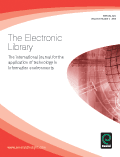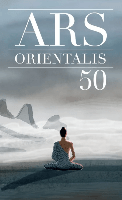
Digital Humanities Quarterly
metrics 2024
Pioneering new pathways in digital humanities research.
Introduction
Digital Humanities Quarterly, published by the Alliance Digital Humanities Organizations, is a leading open-access journal since 2007, dedicated to advancing research at the intersection of digital technologies and the humanities. With a noteworthy ISSN of 1938-4122, this journal serves as a vital platform for scholars engaging in innovative digital methodologies across diverse fields, including arts and humanities, communication, library sciences, and computer networks. Over its converged years from 2018 to 2024, it has earned impressive rankings, notably being placed in Q2 among peers (2023) in Arts and Humanities, Communication, and Library and Information Sciences. With an impact on critical discourse and practice in digital scholarship, Digital Humanities Quarterly is essential for researchers, professionals, and students aiming to understand and contribute to this dynamic field. The journal is based in the United States at Snell Library 213, Northeastern University, Boston, MA 02115, and strives to connect a global audience through its unrestricted access model.
Metrics 2024
 0.33
0.33 0.50
0.50 0.60
0.60 9
9Metrics History
Rank 2024
Scopus
JCI (Web Of Science)
Quartile History
Similar Journals

ELECTRONIC LIBRARY
Elevating the Discourse in Information TechnologiesELECTRONIC LIBRARY, published by EMERALD GROUP PUBLISHING LTD, serves as a pivotal resource in the realms of Library and Information Sciences as well as Computer Science Applications. Established in 1983 and continuing through 2024, this journal showcases critical research and developments that shape modern information practices and the utilization of electronic resources. With a respectable impact factor positioning it in the Q2 quartile for Library and Information Sciences and Q3 for Computer Science Applications, the journal ranks #57 out of 280 in its field, reflecting its significance within the scholarly community. Authors are encouraged to contribute innovative studies that engage with current challenges and technological advancements, ensuring that the ELECTRONIC LIBRARY remains at the forefront of academic discourse. While the journal does not currently offer open access options, it remains an essential subscription-based resource for researchers, professionals, and students seeking to deepen their understanding of digital libraries and information management.

Studi irlandesi-A Journal of Irish Studies
Celebrating Ireland's Literary and Historical LegacyStudi Irlandesi - A Journal of Irish Studies, published by FIRENZE UNIV PRESS, stands as a pivotal platform for the dissemination of scholarly research in the field of Irish Studies. With its Open Access model established since 2011, the journal facilitates the global exchange of knowledge and ideas, catering to researchers, professionals, and students with an interest in Ireland's rich cultural, historical, and literary heritage. The ISSN for the journal is 2239-3978, ensuring easy accessibility for those engaged in contemporary Irish studies. This journal not only aims to advance academic discourse but also serves as a crucial resource for interdisciplinary analysis surrounding Irish identity and its global impacts. As an essential publication within its field, Studi Irlandesi invites contributions that enhance understanding of Ireland’s complexities and its contributions to world culture.

Em Questao
Navigating the Future of Library Science and CommunicationEm Questao is an esteemed open-access journal dedicated to the fields of library science and communication studies, published by the Universidade Federal do Rio Grande do Sul, specifically through its esteemed Faculdade de Biblioteconomia e Comunicação. Since its inception in 2003, this journal has provided a platform for researchers, professionals, and students to disseminate influential scholarly work that fosters dialogue and innovation within these critical academic domains. Em Questao strives to enhance the visibility of emerging trends and methodologies in library science and communication, making it an indispensable resource for those looking to navigate the complexities of information dissemination in today's digital landscape. With a commitment to open access, it ensures that knowledge is readily available to a global audience, contributing to the advancement of these vital fields. Researchers interested in exploring insightful analyses and fostering collaborative research will find Em Questao a valuable addition to their academic resources.

Antares-Letras e Humanidades
Advancing Multidisciplinary Perspectives in Literary StudiesAntares-Letras e Humanidades is a prominent academic journal published by the Graduate Program in Literature, Culture & Regions at the Universidade de Caxias do Sul, Brazil. As a dynamic platform for scholarly dialogue in the humanities, this journal serves as a vital conduit for research focused on literature and cultural studies, aiming to foster a deeper understanding of these intricate fields. With its ISSN 1984-4921, Antares-Letras e Humanidades welcomes multidisciplinary approaches and encourages submissions that explore the nuances of literary expression, cultural contexts, and regional significance. While it currently operates under a non-open access model, the journal remains committed to enhancing its visibility and reach within the global academic community. As an emerging publication, it holds great potential for contributing significantly to ongoing discussions and advancements in humanities research, making it an essential resource for scholars, students, and professionals eager to engage with contemporary issues in literature and culture.

Miranda
Empowering voices in social science scholarship.Miranda (ISSN: 2108-6559, E-ISSN: 2108-6559) is a distinguished open access journal published by UNIV TOULOUSE II-JEAN JAURES, dedicated to advancing knowledge across various fields of the humanities and social sciences. Since its establishment in 2010 as an open access platform, Miranda has aimed to foster inclusive academic discourse by providing unrestricted access to high-quality research. With its commitment to accessibility and scholarly excellence, this journal serves as an essential resource for researchers, professionals, and students seeking to enrich their understanding and engage with contemporary issues within their disciplines. The journal prides itself on its rigorous peer-review process and aims to publish original research, reviews, and interdisciplinary studies that contribute to the evolving landscape of humanities and social science research. Located in Toulouse, France, Miranda is poised to make a significant impact in its field and invites contributions that reflect diverse perspectives and innovative research methodologies.

Humanities & Social Sciences Communications
Fostering innovation at the intersection of humanities and social sciences.Humanities & Social Sciences Communications is a premier journal published by SPRINGERNATURE, based in the vibrant academic environment of the United Kingdom. Launched as an Open Access publication in 2020, it provides a dynamic platform for interdisciplinary research across the fields of arts and humanities, business, management, economics, psychology, and social sciences. With a distinguished impact factor reflected in its 2023 categorization as Q1 across multiple subjects, this journal exemplifies excellence, holding high rankings in Scopus for general art, economics, and social sciences categories, placing it in the top tiers of research outputs worldwide. The journal aims to foster scholarly dialogue, encourage innovative ideas, and advance significant findings that address the complexities of contemporary societal issues. With open access options, it ensures that research is widely disseminated, promoting global collaboration and engagement among researchers, professionals, and students alike. By merging analytical rigor with real-world relevance, Humanities & Social Sciences Communications stands as a cornerstone resource for anyone seeking to make an impact in their respective fields.

ARS Orientalis
Fostering Scholarly Dialogue Across DisciplinesARS Orientalis is a distinguished academic journal published by the Smithsonian Institution's Freer Gallery of Art, specializing in the fields of archaeology, cultural studies, and the visual and performing arts. With an ISSN of 0571-1371, this journal contributes significantly to scholarly discourse, having established a robust timeline of publication since its inception, notably from 2001 to 2006, 2010 to 2012, 2014 to 2017, and resuming again from 2022 to 2023. Though currently not open access, it maintains a respectable standing in the academic community with a categorization into Q3 quartiles across several disciplines, highlighting its relevance amid rigorous scholarly evaluation. The journal is particularly valuable for researchers, professionals, and students who seek to explore interdisciplinary connections within its scope. Situated in the United States, it aims to disseminate insightful research that bridges the gap between traditional scholarship and contemporary studies in visual culture and archaeological findings.

Anales de Documentacion
Illuminating the Path of Academic Inquiry in Information SciencesAnales de Documentacion is a distinguished open-access journal published by UNIV MURCIA, contributing significantly to the field of Library and Information Sciences since its inception in 1998. With a focus on the dissemination of innovative research and studies, this journal serves as a vital resource for researchers, professionals, and students engaged in the dynamic landscape of documentation and information management. Although coverage in Scopus was discontinued from 2013 to 2020, the journal continues to hold its place in the academic community, ranking #167 out of 227 in the Social Sciences category, reflecting its commitment to quality and relevance. The journal's accessibility enhances its utility, making vital research available to a broad audience, thereby fostering collaboration and scholarly exchange in the evolving discourse of information sciences. Its address at the Edificio Pleiades on the Campus de Espinardo in Murcia, Spain, further signifies its role as a central hub for academic inquiry and exploration in this essential field.

LaborHistorico
Illuminating the Dynamics of Labor RelationsLaborHistorico is a distinguished academic journal published by the Universidade Federal do Rio de Janeiro, Faculdade de Letras, dedicated to the field of labor studies and historical research. Focusing on the dynamics of labor relations and their historical contexts, this journal aims to provide a platform for rigorous scholarship and innovative perspectives on the evolving nature of work. While it does not currently adopt an Open Access model, it remains committed to making relevant research accessible to its audience, which includes researchers, professionals, and students in the humanities and social sciences. With a dedication to fostering interdisciplinary dialogue, LaborHistorico offers its contributors and readers a vehicle for critical discussions and insights into labor history, making it an essential resource for anyone interested in understanding the complexities of labor through time.

Artnodes
Fostering Interdisciplinary Connections in Art and ScienceArtnodes is a prominent academic journal published by UNIV OBERTA CATALUNYA, making significant contributions to the interdisciplinary fields of Arts and Humanities, Cultural Studies, and Computer Science. With an ISSN of 1695-5951 and an E-ISSN of 1695-5951, this Open Access journal has been accessible to the global community since 2002, encouraging the dissemination of innovative research and artistic exploration. Distributed from its headquarters in Barcelona, Spain, Artnodes has established itself as a vital resource, particularly in the domains categorized under Visual Arts, Performing Arts, and Literature, boasting a Q1 ranking in several areas for 2023. The journal is also noted for its impact in computer graphics and design, highlighting the integration of technology and art. With an impressive Scopus rank of #134 in Visual Arts and Performing Arts, this journal remains a critical forum for scholars and practitioners alike, facilitating dialogue and advancing knowledge across disciplines.